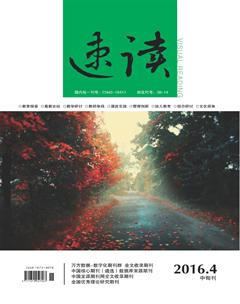An Analysis of Ode to the West Wind by Percy Bysshe Shelley
1. Introduction
William Wordsworth, George Gordon, Lord Byron and Percy Bysshe Shelley are regarded as three greatest romantic poets in England. And Shelley is known for his lyric poetries and imagination. At Eton, his schoolmates called him “Mad Shelley”, and in judgment of the world he remained “mad Shelley” to the end of his life. In this poem, the poet expressed the deep love for the nature and celebrated the spirit of the west wind who destroyed old things and gave birth to new things.
2. Appreciation
In the five magnificent stanzas of the poem, Shelley addresses the west wind directly as a force that is both destructive and creative. He focused on three natural objects of the winds power: the autumn leaves in stanza 1, the clouds in stanza 2, and the waves in stanza 3. Stanza 4 marks a crisis in the poem. In stanza 5, Shelley discovers his true relationship to the west wind. He would be the winds “lyre” receiving its “mighty harmonies” like a wind harp or like the forest itself. These images changed into words to predict and to awaken a rebirth of human imagination.
3. Symbols in the Poem
Shelleys west wind is a symbol of “spirit”, “the breath of autumns being”. It is destroyed on earth, in sky and sea in order to revive in the spring. Around this central symbol, the poem describes various cycles of death and regeneration, which are nature, human, and divine.
4. Structure
In this poem, Shelley used “terza rima”, an Italian measure first used by Dante in his “The Divine Comedy”. Like a sonnet, each stanza is fourteen lines long. Shelleys rhyme scheme for his stanzas may be represented as “aba bcb cdc ded ee”. The middle rhyme of each triplet becomes the first and third rhyme of the next triplet: aba, bcb, and so on. It is written in iambic tercets. This scheme creates a sense of disordered, circulating activity of the wind as it drives and tosses the leaves, clouds, and waves.
5. Conclusion
The “West Wind” and Shelley himself are the main characters of the ode. The “West Wind” represents liberty, the power of nature for Shelley. The wind is the changing part in nature, which also controls heaven and the sea. It can stand for death, but at the same time it means life. On the one hand, the wind is simple in its function, but on the other hand, it is a mystical thing. Shelleys poems are pure, praising democracy and freedom, longing for the ideal society, supporting revolutionary ideas. It can fully be called the best work of Shelleys.
Reference
[1]. Northrope Frye. Anatomy of Criticism [M]. Princeton University Press, 1957.
[2]. 吴伟仁. History and Anthology of English Literature [M]. Foreign Language Teaching and Research press, 2006.
[3]. 郭沫若. 《沫若译诗集》[M]. 北京:新文艺出版社,1953.
[4]. 徐广联. 《论雪莱<西风颂>的复义性》[J]. 湘潭师范学院学报(社会科学版), 2009(1).
[5]. 杨晶晶. 《细处着眼论真知: 对诗歌<西风颂>的文学文体分析》 [J]. 文教资料,2009(6).
作者简介:
王文静(1990- )女,山西阳泉人,山西财经大学经贸外语学院。

